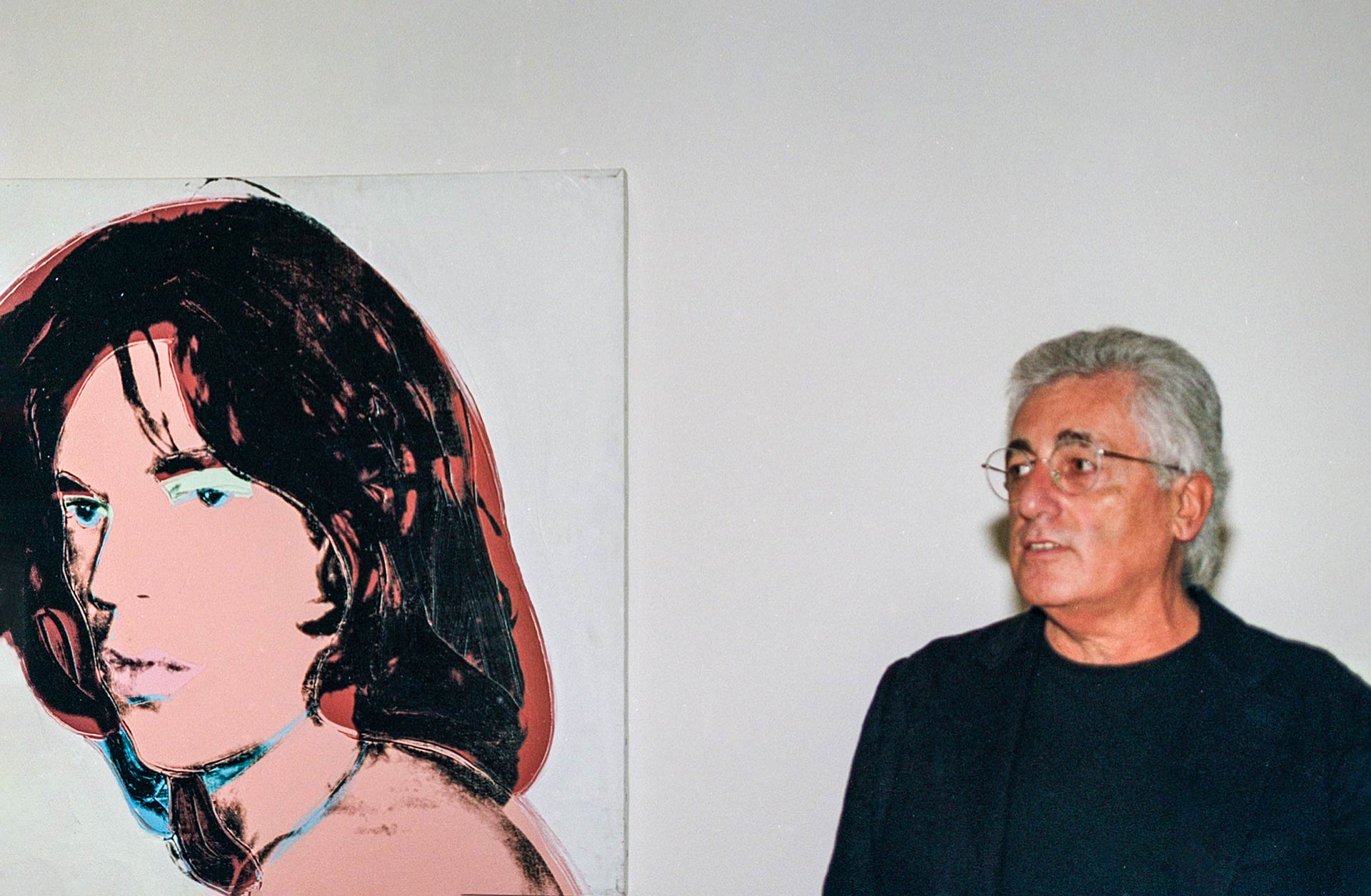
GERMANO CELANT
The Guggenheim Museum Bilbao wishes to pay tribute to Germano Celant (b. 1940, Genoa, Italy; d. 2020, Milan, Italy) on the occasion of the closure of the exhibition Richard Artschwager, the last project completed by our admired collaborator, a habitual interlocutor, and an inspiring presence for this Museum and all the Guggenheim Museums for more than thirty years.
The outstanding retrospective on Artschwager, open from February to August 2020 and organized in conjunction with MART Museo d’Arte Moderna e Contemporanea di Trento e Rovereto, bears the unmistakable stamp of Germano Celant’s beautiful and explosive curatorial style. The narrative synthesis and humor of its almost labyrinthine itinerary, full of surprises and associations between ideas and works, will no doubt have made an impact on all those able to visit it physically or virtually in the course of this unsettling year, which has left us with many inconsolable losses, among them that of Germano himself. This will have been his fifth major exhibition in Bilbao, after the memorable shows dedicated to Andy Warhol (1999–2000), Anselm Kiefer (2000), the Panza Collection (2000–01), and Giorgio Armani (2001).
A precursor, an iconoclast, a leading critic, and the confidant of many of the great artists of his time, Germano Celant will be remembered as one of the figures who have shaped the contemporary art of both the twentieth and the twenty-first centuries. It is hard to choose the principal milestones of his long career, from the definition of Arte Povera in 1967 to the dazzling historical surveys of Arts & Foods in 2015 and Post Zang Tumb Tuuum in 2018, and many other achievements, including the artistic direction of the 47th Biennale di Venezia. Another highlight of this outstanding career was his appointment as curator of contemporary art of the Solomon R. Guggenheim Museum in New York in 1988, which set the institution firmly on an international course. Soon after, the idea of a museum with several centers around the world took shape under the leadership of Thomas Krens and with the active implication of Germano, and eventually materialized, thanks to the Basque Institutions and their vision, with the inauguration of the Guggenheim Museum Bilbao in 1997.
In everything he did, Germano sought what he called a “360-degree vision,” which was combined with his incomparable ability to find and reveal links and build bridges between areas apparently remote from each other. Convinced that the artistic spirit of our time is a continuity, Germano unhesitatingly delved into architecture, design, fashion, and gastronomy with the same fascination as he felt for art. He thus supported radical Italian design in the seventies, and in the early eighties he was the first to celebrate the genius of Frank Gehry, an architect to whom he was bound by a lasting personal and artistic friendship.
Erudite and popular, multidisciplinary, energetic, and nonconformist, Germano Celant was distinguished by a curiosity that placed all categories on the same horizon, that of human knowledge. His legacy will be not only the living history of our time but also a constant inspiration for the future.
Juan Ignacio Vidarte
Director General, Guggenheim Museum Bilbao
Deputy Director & Chief Officer for Global Strategies, Solomon R. Guggenheim Foundation
